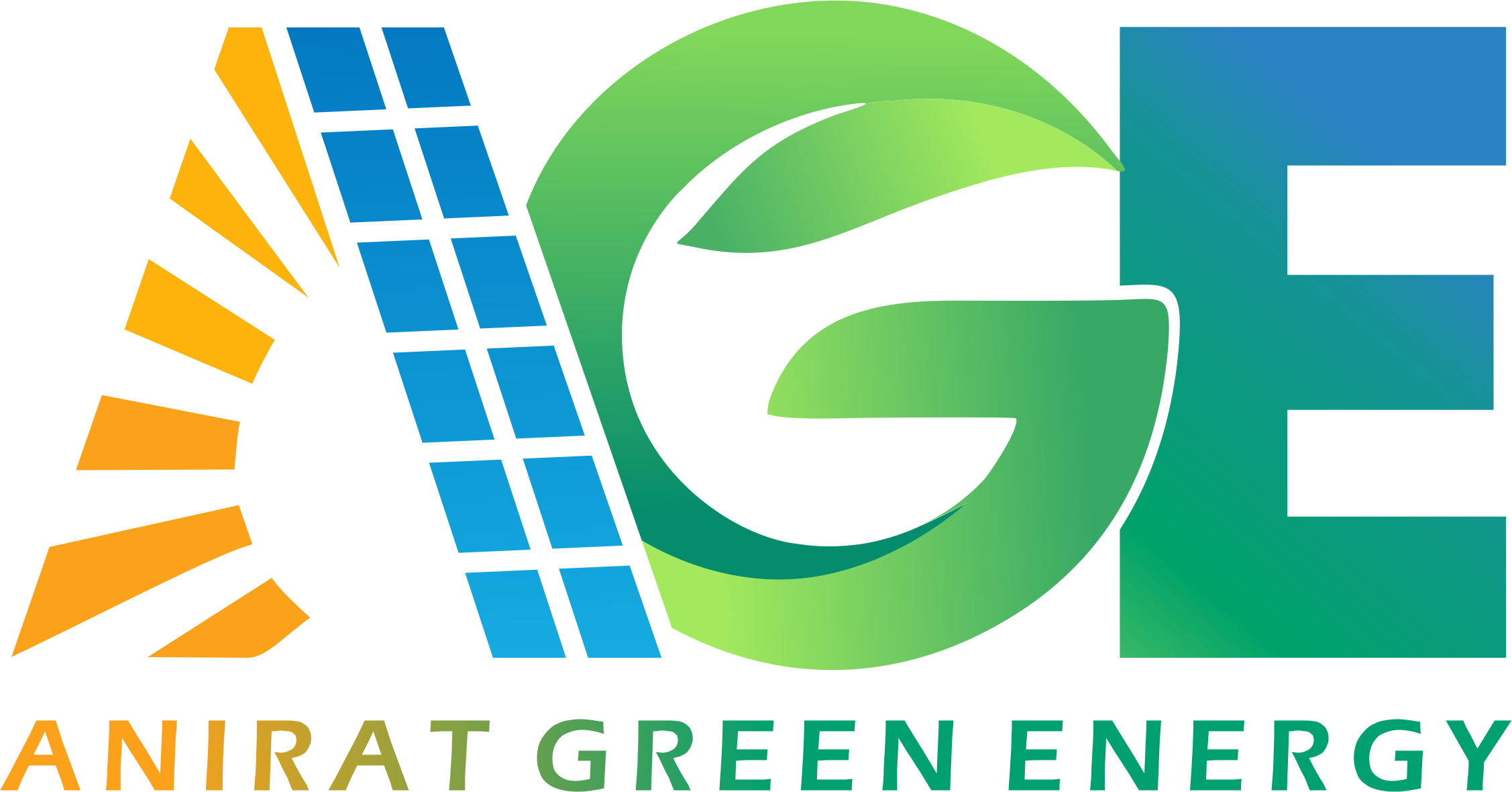FAQ's
Frequently Asked Questions
When you install a solar energy system on your property, you save money on your electricity bills and protect yourself against rising electricity rates in the future. How much you can save depends on your area's utility rates and solar policies, but going solar is a wise investment regardless of where you live.
Like other renewable energy resources, solar power has many environmental and health benefits. Going solar reduces greenhouse gas emissions, which contribute to climate change, and results in fewer air pollutants like sulfur dioxide and particulate matter, which can cause health problems.
The easiest way to find out how much you pay for electricity (and how much electricity you use per month) is to take a look at your utility electricity bill—Review aniratgreenenergy.com guide to reading your electricity bill to find out exactly what to look for.
Net metering is the system utilities use to credit homeowners with solar for the electricity their solar panels produce. With net metering, you only pay for the electricity that you use beyond what your solar panels can generate. Net metering policies differ from state to state – from Kashmir to Kanyakumari – so do your homework ahead of time.
If you're installing a solar system on your home, it makes sense that you're probably wondering how it converts sunlight to energy and what happens when events like blackouts occur. We've got all of the answers you need right here
Solar panels absorb the sun's energy throughout the day and convert it into direct current (DC) electricity. Most homes and businesses run on alternating current (AC) electricity, so the DC electricity is then passed through an inverter to convert it to usable AC electricity. At that point, you either use the electricity in your house or send it back to the electric grid.
The amount of power your solar energy system can generate depends on sunlight. As a result, your solar panels will produce slightly less energy when the weather is cloudy and no energy at night. However, because of high electricity costs and financial incentives, solar is smart even if you live in a cloudy city.
Unless your solar energy system includes battery storage and you are fully off the grid, you will still receive a bill from your utility. However, you can dramatically reduce your bill or even cut the amount you owe to ₹0 with a solar panel system that matches your energy use.
When you install solar panels on your property, you will still be connected to the grid. This allows you to draw from the grid when your system is not producing all the power you need and send power back to the grid when you produce more than you use. It is possible to go off the grid with a solar energy system that includes battery storage. Still, it will cost significantly more and is unnecessary for most homeowners.
If your solar panel system is connected to the grid, it will shut off during a blackout. This is to prevent emergency responders and electricity utility repair people from being injured by your panels sending power back to the grid. However, there are certain inverters you can buy that provide backup power in a blackout when paired with a battery.
Solar panel systems are made of durable tempered glass and require little to no maintenance for the 25 to 35 years that they will generate power. In most cases, you don't even need to clean your solar panels regularly. If something does happen, most equipment manufacturers include warranties, although warranty terms depend on the company.
There are two solar financing options: purchase your system in cash or take out a solar loan from PM SURYA GHAR MUFT BIJLI YOJANA. To buy your solar.
Solar rebates and incentives vary depending on where you live. The most significant incentive is available nationwide. Government of India is Provided 78000 under PM Suryoday Yojana.
If you can afford to pay your electricity bill, you can afford to go solar. ₹0-down solar financing options, solar loans, make it easy for homeowners with good credit to start saving on their electricity bills by going solar. Register on the Anirat Green Energy Marketplace to compare costs and savings for multiple financing options.
The size of your solar energy system will depend on how much electricity you use every month and the weather conditions where you live. Look at your past electricity bills and compare offers from licensed, pre-screened solar installers to determine the best system size for your needs. Ultimately, your solar installer will be able to assess your property and advise you on the correct system size for your needs.
South-facing roofs with little to no shade and enough space to fit a solar panel system are ideal for installing solar. However, there are workarounds in many cases if your home doesn't have the ideal solar roof. Register your property on Anirat Green Energy to learn more about your options; all installation offers are based on images of your actual roof.
Solar panels are generally very durable and capable of withstanding snow, wind, and hail. The various components of your solar power system will need to be replaced at different times, but your system should continue to generate electricity for 30 to 35 years.
If you own your solar energy system, your solar house will sell at a premium: studies have shown that solar increases property values.
There are a few criteria that everyone should use when choosing a solar installer. Confirm that they are certified, licensed, insured, have relevant experience, and can provide references. All Anirat Green Energy -approved installers are pre-screened to ensure that they meet these high-quality standards. Meet with your solar installer in person before signing an agreement to ensure you are comfortable working with them.
While every solar panel brand and product has unique specifications, Anirat Green Energy has rated solar panels on a five-tier scale, from Poor to Fair, through Good and Very Good, and ultimately up to Excellent. The classifications are displayed on each Anirat Green Energy Buyer's Guide panel page. They are provided alongside every quote submitted through the Anirat Green Energy Marketplace to help shoppers compare their options and choose the best solar panels for their needs.
If you want detailed information about how much energy your solar panel system produces, ask your installer about solar monitoring system options. In many cases, solar lease agreements will include free programs to track your system's performance. You may need to pay for one separately if you own your system.
Solar power systems that include solar batteries, known as solar-plus-storage, are increasingly popular but can be pricey. Luckily, batteries are not necessary for most solar homeowners. As long as you are connected to the grid, your system does not need a battery: excess power goes back into the grid, and you can draw from the grid if you need more electricity than your panels can generate.
If you own a share of or subscribe to a community solar project, you will receive virtual net metering credits on your electric bill from your utility. Each credit is equal to one kilowatt-hour (kWh) of electricity. For example, you use 1,000 kWh at home in one month, and your community solar share produces 800 kWh. The 800 kWh in credits from your share are applied to your electric bill, and your utility bills you for the remaining 200 kWh. You pay your community solar provider directly for the cost of your share or subscription.
WhatsApp us

